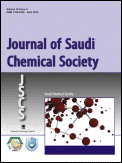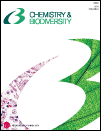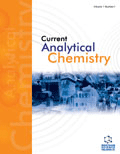
Glasnik Hemicara i Tehnologa Bosne i Hercegovine
metrics 2024
Transforming Ideas into Impactful Solutions
Introduction
Glasnik Hemicara i Tehnologa Bosne i Hercegovine is a distinguished journal dedicated to advancing the fields of chemistry and technology within Bosnia and Herzegovina and beyond. Published by the University of Sarajevo, Faculty of Science, this academic journal offers a platform for the dissemination of original research, reviews, and case studies that contribute to the rich tapestry of knowledge in chemical sciences and technological applications. With a commitment to promoting open access to vital research, Glasnik Hemicara i Tehnologa cultivates an inclusive environment for researchers, professionals, and students alike, fostering collaboration and innovation. Although specific metrics such as impact factor and H index are yet to be established, the journal's role in bridging academia and industry cannot be overstated, making it an essential resource for those engaged in scientific inquiry in the region.
Metrics 2024
 -
- 0.20
0.20 0.40
0.40 -
-Metrics History
Rank 2024
IF (Web Of Science)
JCI (Web Of Science)
Quartile History
Similar Journals

Journal of Saudi Chemical Society
Advancing Chemistry Knowledge, One Article at a Time.The Journal of Saudi Chemical Society, published by ELSEVIER, stands as a premier platform for advancing knowledge in the field of chemistry. Since its inception in 2009, this Open Access journal has garnered significant attention, securing a prestigious Q1 ranking in the Chemistry (miscellaneous) category for 2023, reflecting its position among the top journals in the discipline. With an impressive Scopus ranking of #66 out of 408 in General Chemistry, this journal boasts a commendable 83rd percentile, underscoring its impact and relevance in the global research community. The journal aims to disseminate high-quality research articles, reviews, and case studies, fostering innovation and collaboration among chemists and allied professionals. By enabling widespread access to cutting-edge research, the Journal of Saudi Chemical Society plays a crucial role in supporting the educational and professional development of students, researchers, and practitioners alike, making it an essential resource for anyone invested in the dynamic field of chemistry.

Journal of Essential Oil Bearing Plants
Unveiling Nature's Aromatic SecretsJournal of Essential Oil Bearing Plants, published by Taylor & Francis Ltd, is a peer-reviewed academic journal that plays a critical role in the field of essential oils and their applications in analytical chemistry, biochemistry, and organic chemistry. With an ISSN of 0972-060X and an E-ISSN of 0976-5026, this journal has been a valuable resource since its inception in 2003 and continues to publish cutting-edge research through 2024. The journal is classified in the Q2 category for Analytical Chemistry and Q3 for both Biochemistry and Organic Chemistry as of 2023, reflecting its high citation impact and relevance in these scientific domains. Researchers and practitioners will find a wealth of knowledge in its pages, showcasing innovative methodologies and findings that advance our understanding of essential oils and their diverse applications. While the journal does not currently offer Open Access options, its rigorous peer-review process ensures that published studies maintain the highest standards of scientific integrity. Located in the United Kingdom, the Journal of Essential Oil Bearing Plants is dedicated to disseminating essential research findings to a global audience, thereby facilitating ongoing dialogue and development in this important field.

Progress on Chemistry and Application of Chitin and its Derivatives
Unveiling the Secrets of Chitin ChemistryProgress on Chemistry and Application of Chitin and its Derivatives is an esteemed journal that focuses on the multifaceted aspects of chitin and its derivatives, showcasing pioneering research in the fields of Biochemistry and Organic Chemistry. Published by Polish Chitin Society and operating under an open access format, this journal aims to disseminate high-quality research findings and innovative applications related to chitin chemistry, promoting the exchange of knowledge among researchers, professionals, and students worldwide. With a commitment to advancing the understanding of biopolymer science, the journal has been active since 2012 and is recognized for its contributions to the field despite its current classification in the Q4 quartile for both categories. Researchers will find a platform that not only highlights the latest advancements but also integrates interdisciplinary approaches to explore the potential of chitin in diverse applications. For those interested in the chemistry and application of biopolymers, this journal represents an essential resource that promises to drive future innovations and collaborations in the field.

CHEMISTRY & BIODIVERSITY
Bridging Chemistry and Biodiversity for a Sustainable Future.CHEMISTRY & BIODIVERSITY is a prominent peer-reviewed journal published by Wiley-V C H Verlag GmbH, serving as a vital resource in the intersecting fields of biochemistry, bioengineering, and miscellaneous chemistry. With an ISSN of 1612-1872 and an E-ISSN of 1612-1880, this journal has established itself over its converged years from 2004 to 2024 as a platform for innovative research that contributes significantly to the understanding of chemical processes in biological systems. The journal's impact is reflected in its category quartiles, particularly notable in Q2 in Chemistry and various Q3 and Q4 rankings across multiple related disciplines. While it is not an open-access publication, it continues to attract a diverse readership, including researchers, academics, and students, who are keen to explore the complexities of chemistry's role in biodiversity. Through high-quality articles and comprehensive reviews, CHEMISTRY & BIODIVERSITY plays an essential role in fostering advances in molecular biology and biochemistry, positioning itself as a key contributor to the ongoing discourse in the life sciences.

Current Analytical Chemistry
Exploring the forefront of analytical techniques.Current Analytical Chemistry is a pivotal journal in the field of analytical chemistry, published by Bentham Science Publishers Ltd. Established to bridge the gap between fundamental research and practical applications, this journal offers a platform for the dissemination of significant advancements and innovations from the realms of chemical analysis techniques and methodologies. With an impressive scope covering both theoretical and applied analyses, it has successfully secured a Q3 category ranking in the 2023 metrics of Analytical Chemistry, positioned at #75 out of 156 in the Scopus rankings. Researchers, professionals, and students can expect to engage with high-quality content that reflects the latest trends and issues within the discipline. Although it currently does not offer Open Access options, the journal continuously strives to maintain high editorial standards that contribute to its impactful presence in the academic community. The convergence of ideas from 2006 to 2024 promises to uphold its reputation as a reliable source for cutting-edge research in analytical chemistry.

Chemistry Africa-A Journal of the Tunisian Chemical Society
Engaging Minds, Elevating ScienceChemistry Africa - A Journal of the Tunisian Chemical Society, published by SpringerNature, stands as a key platform for the dissemination of research in the dynamic fields of chemistry and its applications across Africa and beyond. With an ISSN of 2522-5758 and an E-ISSN of 2522-5766, this journal not only explores traditional chemistry topics but also delves into the intersections of catalysis, environmental chemistry, and physical theoretical chemistry, as reflected in its 2023 Scopus rankings, which place it in the Q3 quartile across multiple categories. Engaging researchers, professionals, and students, it aims to foster knowledge exchange and promote innovative solutions to contemporary challenges in chemistry. Although currently operating under traditional access, the journal's commitment to open scientific dialogue underlines its role in enhancing the visibility of African chemistry research. With been active since 2018 and set to converge through 2024, Chemistry Africa is vital for advancing regional and global scientific discourse.

Jordan Journal of Chemistry
Empowering Researchers: Unlocking the Potential of Chemistry in Jordan.The Jordan Journal of Chemistry is a prominent publication dedicated to advancing the field of chemistry in Jordan and beyond. Published by the Yarmouk University Deanship of Research & Graduate Studies, this journal serves as a platform for researchers, educators, and practitioners to disseminate their findings in a variety of chemistry sub-disciplines. Although currently classified in Q4 of miscellaneous chemistry and ranking within the 9th percentile according to Scopus, the journal plays a crucial role in fostering academic dialogue and collaboration in the region. With its ISSN 1814-9111 and E-ISSN 2079-7249, the Jordan Journal of Chemistry offers open access to researchers from diverse backgrounds, ensuring that critical research is both accessible and impactful. By bridging local studies with global scientific advancements, this journal is poised to contribute significantly to the growth and recognition of chemistry as a key scientific discipline in the region, with convergence efforts set from 2020 to 2024.

Separations
Innovating for a Cleaner, More Efficient WorldSeparations is a prestigious open-access journal published by MDPI, dedicated to advancing the fields of analytical chemistry and filtration and separation processes. Established in 2014, the journal has swiftly emerged as a significant platform for disseminating groundbreaking research and innovative methodologies in separation science, boasting an impressive E-ISSN of 2297-8739 and operating out of Basel, Switzerland. With its focus rotating from 2016 through 2024, Separations has been categorized in the Q3 quartile for both analytical chemistry and filtration and separation disciplines as of 2023, demonstrating its relevance in these scientific areas. The journal's rankings in Scopus, with 93rd out of 156 in analytical chemistry and 15th out of 19 in chemical engineering filtration and separation, reflect its commitment to high-quality research accessible to a global audience. Researchers, professionals, and students will find valuable insights and pioneering findings that foster collaboration and innovation within the vibrant community of separation science.

Ovidius University Annals of Chemistry
Fostering Global Collaboration in Chemistry.Ovidius University Annals of Chemistry is a prominent open-access journal dedicated to the field of chemistry and chemical engineering, published by OVIDIUS UNIV PRESS since 2012. With its ISSN 1583-2430 and E-ISSN 2286-038X, this journal seeks to foster innovative research and disseminate knowledge across diverse chemical disciplines. Situated in the vibrant academic setting of Ovidius University in Constanta, Romania, this journal receives contributions from a global pool of researchers, enhancing its relevance in the international scientific community. The open-access format ensures that all published articles are freely available, promoting a wider reach and impact of the research dissemination. As a valued resource for academics, industry professionals, and students alike, the Ovidius University Annals of Chemistry plays a crucial role in advancing the understanding of chemical sciences and engineering practices.

Analytical & Bioanalytical Electrochemistry
Unleashing Insights in Analytical and Bioanalytical ScienceAnalytical & Bioanalytical Electrochemistry is a pivotal journal dedicated to the advancement of research and innovation in the fields of analytical chemistry and electrochemistry. Published by the University of Tehran, Faculty of Chemistry, Center of Excellence in Electrochemistry, this journal has been contributing to the scientific community since its inception in 2009 and continues to be a critical platform through 2024. With an ISSN of 2008-4226, it focuses on a variety of topics including electrochemical sensors, bioanalytical techniques, and innovative methodologies in electrochemical analysis. Although it currently holds a Q4 quartile ranking in both analytical chemistry and electrochemistry categories, its unique insights and research findings are essential for advancing knowledge and fostering interdisciplinary collaboration within the scientific community. Researchers, professionals, and students engaged in these dynamic fields will find valuable resources and contribute to the ongoing discourse by publishing their work in this journal. We invite you to explore and engage with the diverse content that Analytical & Bioanalytical Electrochemistry offers to enhance your research and professional development.